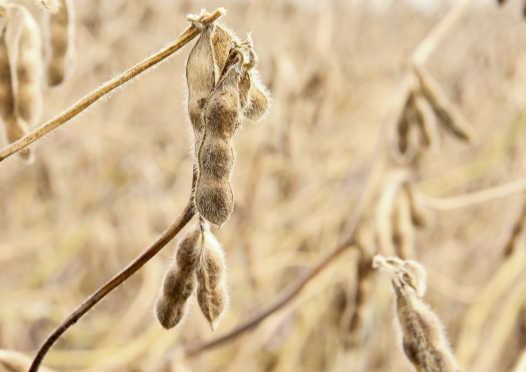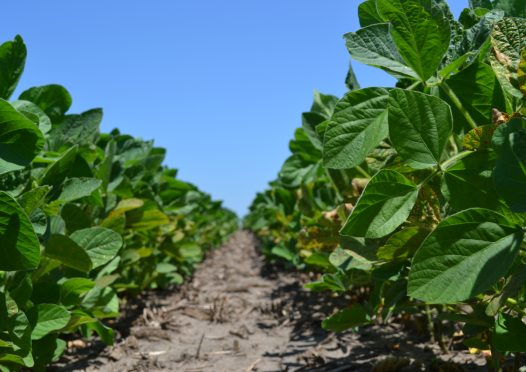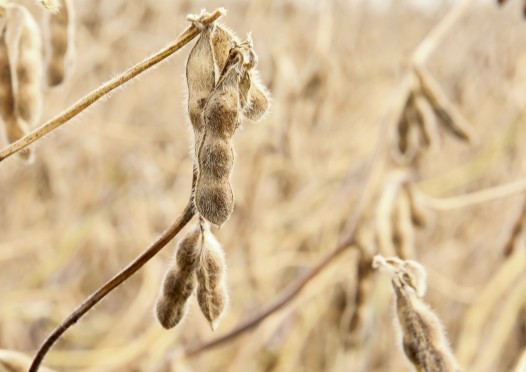ILSOYADVISOR POST
The Top 10 Reasons for Higher Soybean Yields in 2017
A year ago, many CCA’s agreed that Illinois growers needed to make some different management decisions or change their way of thinking when it came to growing soybeans. In response to some of our frustrations, I wrote “The Top 10 Quotes an Agronomist Does Not Want to Hear A Farmer Say About Soybeans.” I think that everyone can agree that 2017 has been a whirlwind of a growing season, and it would be very easy to focus on the negative. But despite the many setbacks, there were some high soybean yields in Illinois. This leads us to the following question: How are Illinois growers overcoming obstacles and obtaining these higher soybean yields?
Here are the Top 10 reasons why some obtained higher yields in 2017.
10.) “Soybeans are profitable, so I am putting focus on the management of my crop, so I can achieve higher yields.”
Word is getting out about Fred Below’s six secrets of soybean success that can help us achieve 100-bushel soybeans. Among those were weather, fertility, foliar protection, narrow row spacing and seed treatment. I think this research has helped achieve higher yields in 2017, despite meddling from Mother Nature.
Soybeans More Profitable Than Corn
Meeting the Challenge of 100 Bushel Soybeans
9.) “Fall herbicide burndown application was a must for early season weed control.”
After a mild winter, many were regretting that they did not apply a fall burndown herbicide program in 2016. Without this application, weeds like marestail not only rob yields, but winter annuals like henbit provided a host for pests like soybean cyst nematode. A clean field was not only key for better weed control, but also provided a warmer and dryer seed bed for earlier planting.
Learn from Your Weed Challenges
Weed Control 2018 Starts Now
8.) “I put a lot of emphasis on seed selection and have lowered my seed population when planting early.”
No one knows your fields better than you. Therefore, by pinpointing the correct maturity range, population, pest control, agronomic traits, weed program or other management practices needed for your operation, you may not only set up the right conditions for your variety to achieve your expectations, you’ll have the recipe for success.
Sassy, Savvy, and Shrewd Soybean Selection for 2017
Maturity Group Musings: Top 10 Facts You Should Know About Soybean Maturities
Top 5 Reasons to Reduce Your Soybean Populations
7.) “I am not going to wait until I have weed resistance on my farm to make a change in weed management.”
There continues to be weed disasters in 2017, but many have learned that even with the new herbicide technologies, a pre- followed by a post herbicide system, combined with crop rotation, can provide the most consistent weed control. This herbicide program should consist of multiple, effective sites of action, full label rates, and right timing to slow the selection for resistant weed biotypes.
If You Don’t Use a Pre, Don’t Call Me
12 BMPS for Managing Weed Resistance

Caption: A field full of resistant waterhemp
6.) “I scout my soybeans every week on my farm and make management decisions based on what I find.”
Time and time again, some of the best soybean managers are those who are scouting their fields each week and thinking about what they are seeing, or not seeing. This is not only a way to keep tabs on pests, diseases, weeds, fertility or any other issues, but a way to keep track of growth stages to apply foliar protection or take a foliar nutrient or soil test if needed.
What Am I Looking at?
CSI: Crop Soy Investigation
5.) “I refuse to choose my weed control on my farm based on my neighbor’s weed control decision.”
Let’s be honest, issues in 2017 with new soybean herbicide technologies are now causing some to rethink their seed purchasing decisions. I work for an independent seed company that currently offers many different herbicide technologies. For us, the current trend has been a move toward LibertyLink® soybeans, not only because of proven yield, but because it is a herbicide option that stays on target and is an effective management tool against resistant weeds if label guidelines are followed.
Dicamba Technology Demands Multiple Levels of Stewardship
Follow-up to Postemergence Weed Control in Soybeans
4.) “Despite extra input costs, I see the return on investment of soybean foliar protection.”
Many questioned if a fungicide and/or insecticide treatment would provide return on investment this year. Believe it or not, one side-by-side near Sheldon, Ill. (that will be entered in the Illinois Soybean Association Yield Challenge), saw a 5.6 bu/A yield advantage with use of Bayer ILeVO® seed treatment, Delaro™ fungicide, and Leverage® 360 insecticide. I am an advocate for fungicide use at R2-R3 growth stages if warranted. However, in 2017 it appeared that with high combined insect pressure in many fields, an insecticide application would have given you the most bang for your buck.
Growth Stages R4-R6: Protect Soybeans from Stress
Podcast: Fungicide Timing and Use in Production

Caption: Foliar defoliation in early planted soybeans near Reddick, Illinois
3.) “I believe in seed treatment on all my soybean acres.”
A full seed treatment package is among the top five secrets of soybean success because it not only protects stand, but soybeans often grow faster early and remain larger throughout the season, depending on environmental conditions. This year, with a fully treated soybean I could witness the protection of seed up to several weeks in the ground during the 2017 adverse planting conditions. I also observed the control of early season insects, SCN, disease and overall soybean health, accompanied by yield increases with use of our PS SDS® (fungicides, insecticide, biological, ILeVO®) seed treatment on early as well later-planted soybeans in 2017.
Soybean Seed Treatment Evaluation at Emergence
What’s the Right Recipe to Coat Naked Soybeans?
2.) “I started to fertilize ahead of my soybeans.”
I believe that one of the biggest obstacles of growing soybeans today is lack of fertility. Plain and simple, extra fertility will have the greatest impact on yields over 60 bu. Many growers in 2017 have taken note of the updated set of nutrition needs for soybeans, based on recent research, and are not letting their soybeans scavenge for nutrients that are left over from corn. Soil tests will tell you what macro and micronutrients may be lacking and help you keep a handle of your soil pH.
Know Your Soils, Improve Their Quality to Help Soybean Fertility
Better Season-Long Nutrient Supply in Soybean Is Critical
1.) “I am planting my soybeans early, before or at the same time as my corn.”
Lastly, based on yield reports thus far, the highest yields in 2017 were due to earlier planting. More growers are planting earlier, as soon as the soil is fit and the extended forecast is favorable, which is before or at the same time as corn. Early planting requires more management, but I believe in the long run, this investment will pay off.
Six Tips for Early Planting Soybeans
Early Planting of Soybeans and Population
Stephanie Porter is a sales agronomist with Burrus® Hybrids. She educates growers and Burrus staff on all types of pests, weeds, diseases and other agronomic issues that affect corn, soybean and alfalfa production. She is a 2017 Illinois Soybean Association CCA Soy Envoy.




Comments
Add new comment